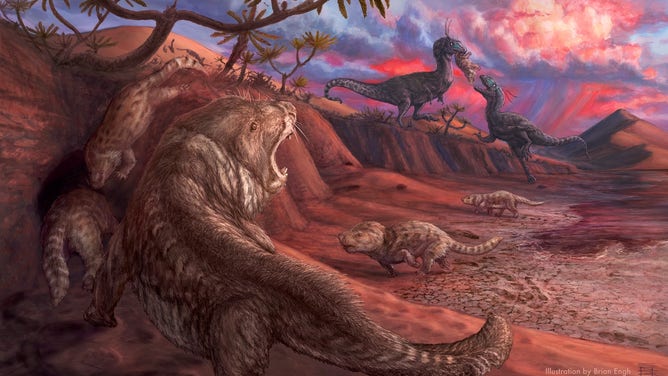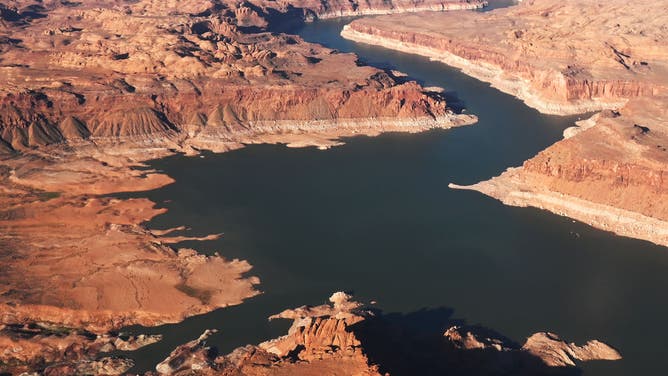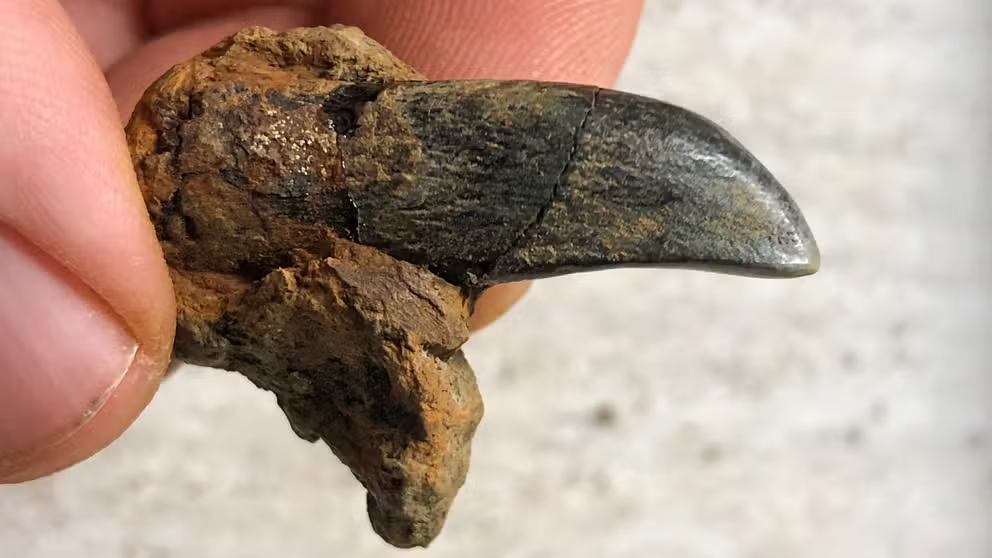‘Extremely rare’ Jurassic fossils discovered in southern Utah
The discovery was made in March 2023, when paleontologists found impression fossils of bone and bone fragments from about 180 million years ago during the Early Jurassic epoch.
FILE: How kids at Dinosaur Park are finding bones with help from the rain
Located in Laurel, Maryland, Dinosaur Park is an outdoor laboratory where paleontologists, park visitors, and the weather combine forces to discover hundreds of fossils.
GLEN CANYON NATIONAL RECREATION AREA, Utah – The National Park Service announced Friday that a field crew discovered body fossils, such as bones and teeth, along a stretch of Lake Powell in Glen Canyon National Recreation Area.
The discovery was made in March 2023, when paleontologists found impression fossils of bone and bone fragments from about 180 million years ago during the Early Jurassic epoch when one of the planet’s largest mass extinctions occurred.
According to the National Park Service, the fossils were of early plant-eating relatives of mammals, also known as tritylodontid mammaliaforms.

A painting depicting an Early Jurassic scene from the Navajo Sandstone desert preserved at Glen Canyon NRA. A small team of paleontologists worked with artist Brian Engh to provide a technically accurate depiction of the rare and enigmatic tritylodonts discovered in March during low water levels of Lake Powell.
(Brian Engh / NPS / FOX Weather)
"These extremely rare fossils are one of the more important fossil vertebrate discoveries in the United States this year," the NPS said.
They noted that the fossil site had been submerged by the fluctuating water levels of Lake Powell. Paleontologists were only able to find the fossils this spring before annual snowmelt filled the lake, but had a short window of 120 days to recover the fossils, according to the NPS.
WHERE DINOSAUR BONES ARE REVEALED BY THE WEATHER
During this time, the paleontologists discovered another rare bone bed nearby.

FILE: Low water levels at Lake Powell in Page, Arizona.
(RJ Sangosti / MediaNews Group / The Denver Post / Getty Images)
The crew collected hundreds of pounds of rocks encasing the fossil bones and skeletons from the site. The NPS noted that the fossils will be scanned and studied, before then becoming a part of the Glen Canyon NRA museum collections housed off-site in Price, Utah.
"Studying these fossils will help paleontologists learn more about how early mammal relatives survived the mass extinction at the end of the Triassic Period and diversified through the Jurassic Period," the NPS said.
Glen Canyon NRA is one of the NPS’s most significant areas for paleontological research, according to the NPS. The most famous and abundant fossils from the site are footprints belonging to meat-eating dinosaurs.
